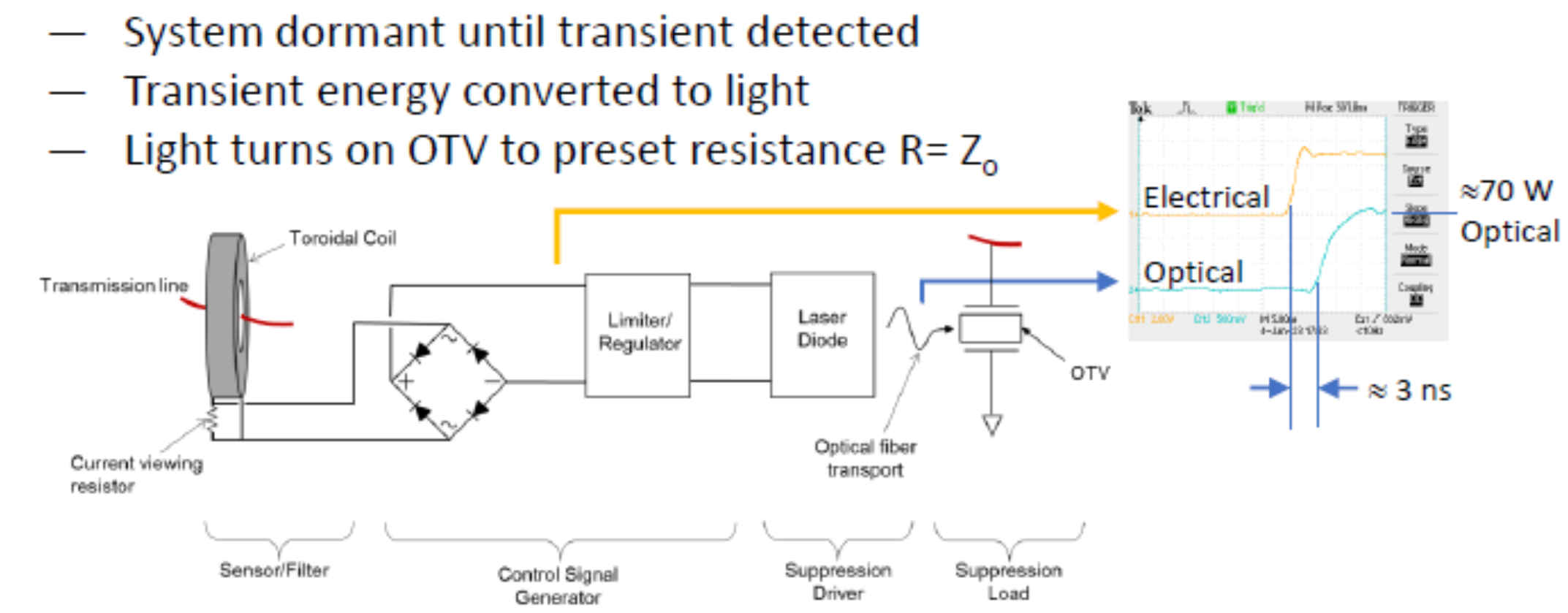Powerline transients can be induced by manmade or natural events and can potential damage the energy grid, resulting in serious economic impact to the country. To mitigate the problem, conventional local crowbar protection is used for transmission lines, which protect against high voltages in the event of a surge. However, this protection method will still reflect and repropagate the transient. What is needed is a system device that can suppress the propagation of transients.
The approach is to leverage the fact that a momentary “load” equal to the power transmission line impedance, (Z0), during the transient can suppress its propagation. Z(0) is typically a fixed impedance of several hundred ohms based on the geometry of most single wire transmission lines.
So, an isolated self-powered opticondistor (OTV) system may provide an ultrafast method of terminating a fast transient real time.
- System is dormant until a fast transient is detected
- Transient energy is converted to light
- Light turns on the OTV to present resistance R = Z(0)
Sampayan, S.E., Grivickas, P.V., Conway, A.M. et al. Characterization of carrier behavior in photonically excited 6H silicon carbide exhibiting fast, high voltage, bulk transconductance properties. Sci Rep 11, 6859 (2021). https://doi.org/10.1038/s41598-021-85275-6
The invention allows for improved switching performance over conventional thyristors.
- Faster switching speed
- Cost-effective operation -> the device stays dormant until a fast transient is detected.
- Energy grid protection and resiliency
- Power Electronics
Current stage of technology development: TRL 2
LLNL has filed for patent protection on this invention. LLNL has a huge portfolio of photoswitch-based patents.


